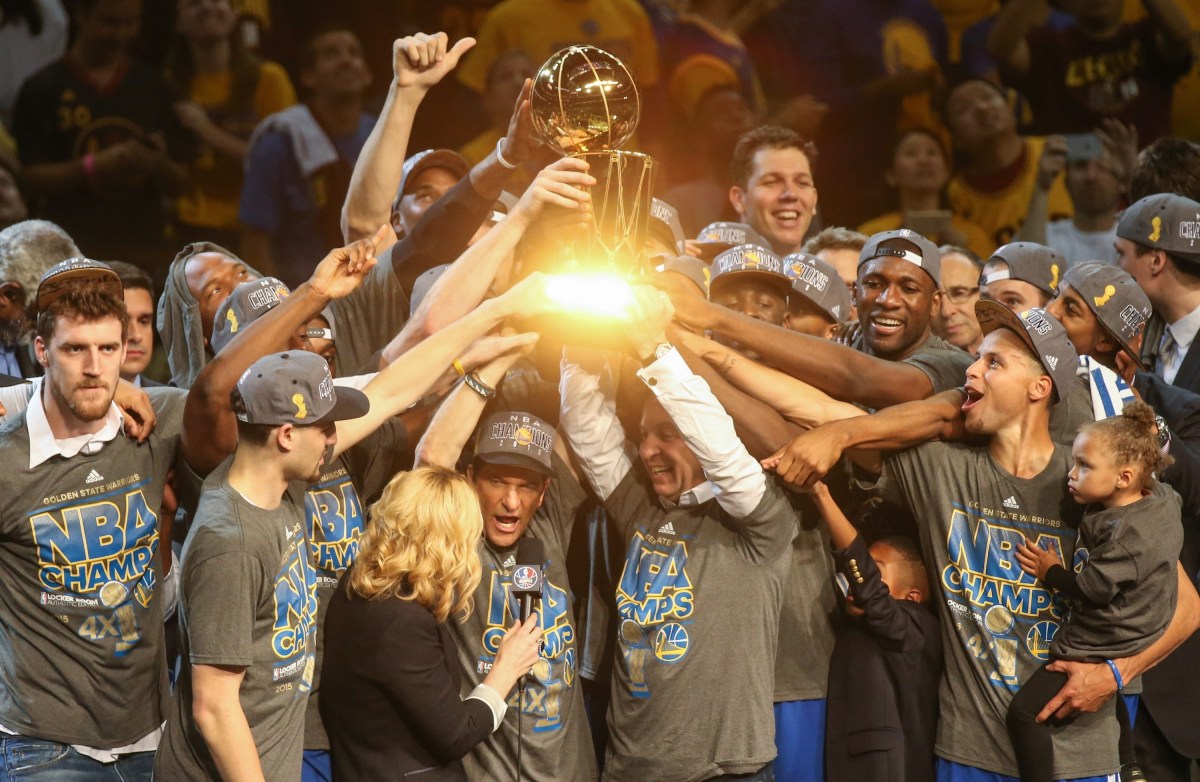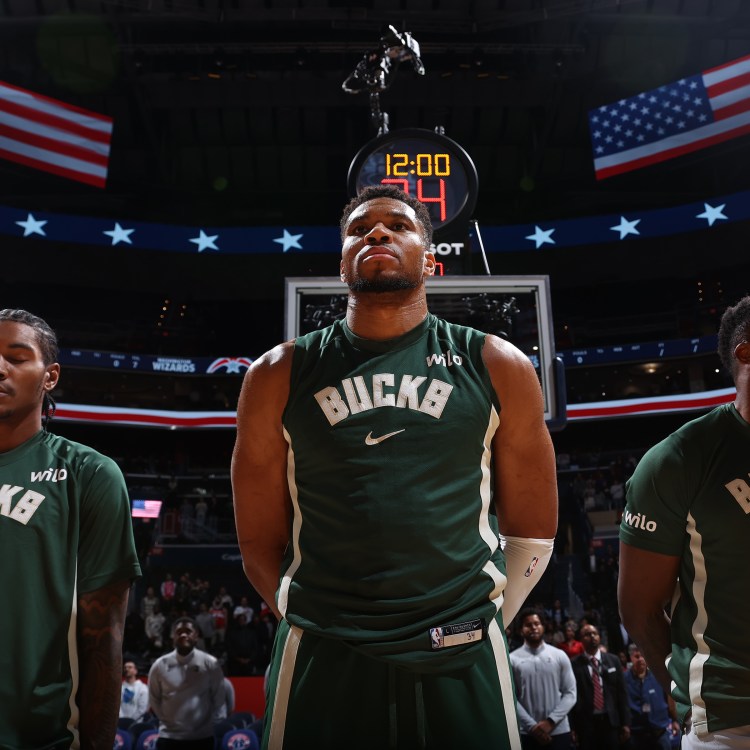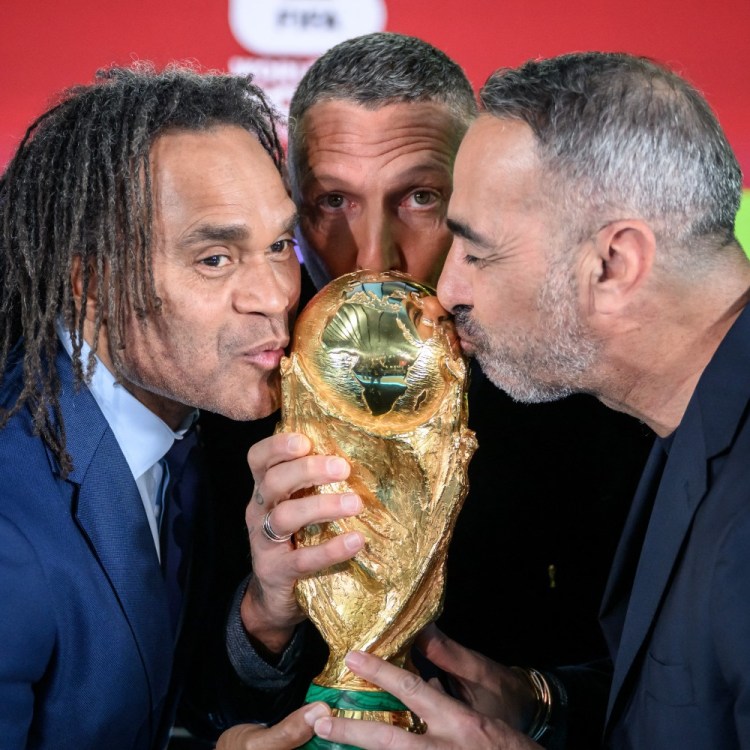This season, the Golden State Warriors seek their third title in four seasons. (They lost in seven in the NBA Finals the other one.) They might meet the Cleveland Cavaliers in the Finals for the fourth consecutive year. For Cavs star LeBron James, that would extend a personal run from his time with the Miami Heat of seven straight Eastern Conference championships.
Over in the NHL, the Pittsburgh Penguins chase a third straight Stanley Cup.
If you’re a soccer fan, Real Madrid plays in the Champions League Final for their third straight title and fourth in five years.
The NFL’s Tom Brady seems determined to start for the New England Patriots forever and is coming off his eighth Super Bowl appearance, with five wins so far.
And if we shift to (nominally) amateur offerings, the Alabama Crimson Tide have found themselves college football’s defending champs for the fifth time since 2009.
The only game that has consistently offered surprises in recent years is baseball, as five different teams won the World Series the last five years. (This has not been the way things work on the diamond traditionally, with the Yankees collecting 27 championships and having just added reigning home run champ Giancarlo Stanton.)
“I ask my classes if competitive balance matters and they say, ‘Yes yes yes,’” says Stefan Szymanski. (The Soccernomics author is the Stephen J. Galetti Collegiate Professor of Sport Management at the University of Michigan.) “Then I show them the evidence: ‘Here’s a league that became more popular when it became less balanced.’”
And how do they react? “It’s really hard to persuade them.”
Which would seem to make sense. Who wants to root for a team that can’t win? Or watch a game where the outcome seems inevitable?
Answer: Most of us. Let’s begin.
We Like Winners
This is obvious, but you may not appreciate just how deeply we adore them.
The PGA nearly tripled prize money from 1996 to 2008. In what is not a coincidence, Tiger Woods won PGA Tour Rookie of the Year in 1996 and earned his 14th and final major to date in 2008. No golfer who began his career since 1996 has won more than four majors. A decade after his glory days, Tiger can still basically double a tournament’s TV ratings just by showing up.
36-year-old Roger Federer has won 20 majors, four more than any other man in tennis history. He reduced the number of tournaments he plays in recent years—he has skipped the French Open since 2016. Yet the Federer Express still dominates on the courts (three majors in the last two years) and at the bank. The most recent Forbes rankings of the highest-paid athletes found he earned $6 million in salary and $58 million in endorsements for a combined $64 million.
No one else in the men’s game reached $40 million.
Fantastic as Federer may be, he still has rivals he can see in the rearview mirror with Rafa Nadal (16 majors) and Novak Djokovic (12). On the women’s side, Serena Williams has long stood alone with her 23 Grand Slam titles, including one she picked up while pregnant. Even with motherhood putting her playing career on the back-burner, Serena remains the top-earning female athlete not just in tennis but in all sports, with $8 million in winnings and $19 million in endorsements. (Indeed, she was the only woman to crack the Forbes Top 100.)
Or look at boxing. Undefeated Floyd “Money” Mayweather is by far the most commercially successful fighter of his era. This success is unlikely for a number of reasons, ranging from heavyweights traditionally being boxing’s big moneymakers (the former heavyweight champ Nikolai Valuev weighs more than Floyd Jr. and his trainer/father Floyd Sr. combined) to the willingness of fans to ignore Mayweather’s history of domestic abuse.
Most surprising, however, may be how Mayweather made a mockery of the very notion of competition. He handpicked opponents who, often as not, had no business being in the ring with him, like Andre Berto and Victor Ortiz. (Ortiz inexplicably stopped defending himself against Mayweather, which turned out about as well as you’d expect.)
This reached its logical extreme with the fight that brought Mayweather’s record to 50-0. The UFC’s Conor McGregor is a skilled mixed martial artist but had no experience as a pro boxer. Thus Mayweather, in his final bout to date, took on a man who posed less of a threat to him than a random sparring partner. (Ironically, this may have resulted in Mayweather’s most entertaining fight in years—freed from even theoretical danger, the defensive wizard actually scrapped a little.)
None of this stopped Mayweather from becoming the first fighter to earn a billion dollars.
Did everybody who bought a Mayweather PPV adore the guy? No. Some were doubtless boxing fanatics who just wanted to watch a master of the sport. (Former Mike Tyson trainer Teddy Atlas told RealClearLife that Mayweather has remarkable defense and is a “great counterpuncher,” though lacks the ability to “generate offense and still be responsible defensively” that would lift him from being a great for his generation to an all-timer.)
Others may have been convinced Mayweather was finally going to lose and it was worth their money to see him humbled.
Whatever the reason, they tuned in, to a degree the public never has for fighters with a few losses on their records.
Now let’s bring in the teams.
How They Do It Overseas
Szymanski has studied decades of soccer data from a variety of nations, looking at both finances and results. He found a pattern that, once you notice it, is impossible to miss: “The leagues have always been dominated by a small number of teams that always win.”
Does it still hold today?
-Celtic F.C. won the Scottish Premiership for the seventh straight time.
-In Italy, Juventus is on the verge of winning its seventh straight Serie A.
-In Germany, Bayern won its sixth straight Bundesliga.
-In France, PSG has won five of the last six Ligue 1 titles. (They were runners-up last year.)
-In Spain, Barcelona has taken seven of the last 10 La Liga titles, finishing runners-up the other three. (And won the last four Copa del Reys for good measure.)
By comparison, England’s Premier League is competitive. In the last six seasons, four different teams came out on top.
“England looks pretty balanced at the moment, but those things could shift,” Szymanski notes.
English soccer has seen long stretches of domination. Liverpool F.C. won 18 titles through 1990. Then Manchester United took charge for the better part of two decades, collecting 13 titles.
Why is today’s Premier League more open? Two words: foreign billionaires. Whether from Russia (Chelsea F.C.), the United Arab Emirates (Manchester City) or Thailand (Leicester City), they took over clubs that were traditionally also-rans.
And, unlike in the U.S. with our salary caps and other restrictions, they were free to unleash their full financial firepower.
“Is the phenomenon of rich people buying success, is it a bad thing?” Szymanski asks. He argues no. In the Premier League, new contenders have been created. In Europe as a whole, cash allows teams to compete for elite players who would have been beyond their reach. (Witness PSG spending hundreds of millions to acquire Neymar.)
“Fans of Barcelona and Real Madrid are complaining that they now face some real competition from Paris-Saint Germain—I don’t really have any sympathy for that point of view,” Szymanski says.
And what about the argument this isn’t fair to the franchises who already trailed the traditional powers and now have to battle mega-budgets?
“The small clubs have no more, no less than they ever have.”
We do it differently in America, though with oddly similar results.
A Rich Tradition of Stifling Competition
“Way back in 1879, William Hulbert, the founder of the National League in baseball, claimed that they needed to promote balance in the league,” Szymanski says. “I think Americans have bought this hook, line and sinker. And it’s just not true.”
Quite simply, Szymanski says that American sports often involve owners “trying to protect themselves from the players.”
Why? Possibly because they see what happens in soccer: “Soccer clubs have never been profitable. I’ve studied financial data for soccer clubs going back to the 19th century. There’s consistent data that this has never been a business that makes money.”
Szymanski has an explanation for the lack of profits in the world’s most popular sport: “This is the paradigm of perfect competition in economics. That’s what happens in perfectly competitive markets: You get zero economic profits. That’s actually good for consumers.” (He says Barcelona F.C. isn’t even set up as a for-profit business.)
Whereas he finds American sports leagues to be monopolies: “That’s bad for consumers. That’s what you have in the United States.”
While it varies slightly from sport to sport, this is generally how things work in the U.S.A.’s big leagues:
-A player gets drafted.
-A player signs a rookie contract. (Whose value is invariably limited by league rules.)
-After a few years, a player becomes eligible for free agency. The options outside the league are extremely limited—a baseball player theoretically can go to Japan or a basketball player can go to, say, Italy—and it’s likely rules will enable their current team to pay them more than any potential suitors. (In general, regulations ranging from luxury taxes to hard salary caps limit how much can be spent prying top talent away from competitors.)
This is an undeniably good arrangement for owners. But it’s not particularly beneficial for:
–Players. (Obviously.)
–Fans. While it’s easy to blame rising athlete salaries for high ticket tickets, the fact is that the leagues have rules restricting pay. These limits haven’t stopped the Los Angeles Rams from considering charging up to $225,000 for individual personal seat licenses, a one-time fee earning you the right to buy a ticket for another $400 or so. Just as there’s a monopoly on where players can peddle their skills, there’s a monopoly on where consumers can go if they want to watch football at its highest level. As long as it exists, keep your checkbook handy.
–Competition. The theory is that by restricting spending, everybody has a shot.
A few more facts:
-From 1949 to 2010, the Lakers won the Western Conference 31 times and went on to collect 16 NBA titles.
-In 1957, the Boston Celtics got in on the act and won the Eastern Conference 21 times, winning 17 championships. (They beat the Lakers nine of the 12 times they met in the Finals.)
-By 1979, Montreal Canadians had won 22 Stanley Cups. Starting in 1980, the New York Islanders won four straight, at which point the Edmonton Oilers won five out of seven.
-This largely overlapped a period when the NFC beat the AFC 15 out of 16 years in the Super Bowl, with five Super Bowls for San Francisco, three for Dallas, three for Washington and two for the New York Giants. (Meaning the NFC East won eight times more Super Bowls than the entire AFC.)
It can be debated why all these sports saw so little parity during these stretches, but one thing’s clear: It didn’t hurt them with fans. Indeed, they literally grew. (Particularly the NHL, which in 1966 still only had six teams compared to 31 today.)
“The obsession with competitive balance is massively overwrought,” Szymanski declares. “There are so many reasons to be interested other than competitive balance. There is no empirical evidence to show competitive balance increases interest in a league. If it really mattered, soccer would not have grown in Europe to the extent that it has.”
Quite simply, sports fans love to see:
-A dynasty in action.
-A dynasty being destroyed.
The New England Patriots have repeatedly demonstrated the charms of both.
The Appeal of the Pats
Since 2002, Brady and Coach Belichick have played in eight Super Bowls. These games included:
Super Bowl XXXVI: A late Brady drive and Adam Vinatieri field goal beat the fearsome St. Louis Rams. (The Greatest Show on Turf featured MVP Kurt Warner and were just two years removed from a Super Bowl title.)
Super Bowl XXXVIII: Another late Brady drive and Vinatieri kick to defeat the Panthers, establishing the first title wasn’t a fluke.
Super Bowl XLII: New England was on the verge of completing an undefeated season until a David Tyree miracle catch.
Super Bowl XLVI: New England was on the verge of avenging their loss to the Giants until a Mario Manningham miracle catch.
Super Bowl XLIX: Facing the defending Super Bowl champ Seattle Seahawks, Brady pulled off a rally for the ages in the fourth, complete with Jermaine Kearse’s miracle catch setting up Russell Wilson’s heartbreaking interception.
Super Bowl LI: Brady created a new standard for comebacks (and miracles) with this overtime victory against the Atlanta Falcons.
Super Bowl LII: Philadelphia finally got a Super Bowl, and it was made all the sweeter by knowing their backup QB held off reigning MVP Tom Brady.
Of the 10 greatest Super Bowls ever, it can be argued seven involved the Patriots.
Meanwhile, 12 NFL teams have never won a Super Bowl and four have never reached it.
Does anyone really want true parity, so we’ll finally get that Super Bowl showdown between the Jacksonville Jaguars and Detroit Lions?
When it comes to sports, there’s no shame in playing favorites. Indeed, it doesn’t even have to be competitive.
“Look at college football,” Szymanski says. “College football is unbelievably popular. And incredibly unequal. How unbalanced can you be?” (Alabama played a home game against Mercer during last year’s title run: The Tide rolled 56-0. Szymanski notes that Michigan’s Big House fills up for even the most severe mismatches, ones he describes as leaving “blood on the pitch by the end of the game.”)
Quite simply, sports let us feel like we’re witnessing greatness. In pursuit of that, we’ll gladly throw out competitive balance and parity. Szymanski believes the desire for this is so overwhelming that humanity may discard its very humanity: “Ever since they threw the Christians to the lions, people have liked unbalanced competition.”
The Charge will help you move better, think clearer and stay in the game longer. Subscribe to our wellness newsletter today.



















